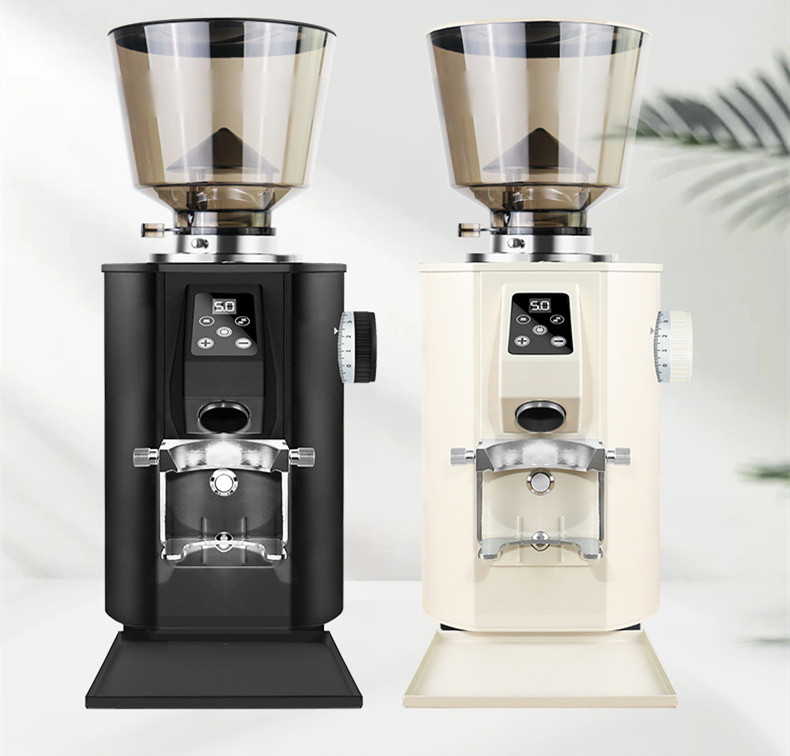Grind Adjustment Strategies for Flat White Coffee: Perfecting the Espresso Base
A flat white’s defining feature—its intense espresso flavor layered beneath silky microfoam—requires precise grind adjustments to achieve optimal extraction. Unlike lattes or cappuccinos, flat whites use a ristretto or slightly shortened espresso shot, demanding a finer grind to balance concentration and clarity. Here’s how to tailor your grinding approach for this specialty coffee.
Understanding Flat White Grind Requirements
Flat whites rely on a very fine grind, slightly finer than traditional espresso, to produce a ristretto shot with a dense body and pronounced flavor. This grind size ensures water flows through the coffee puck slowly, extracting rich oils and sugars while minimizing bitterness.
- Too Coarse: A gritty texture leads to rapid water flow, resulting in a weak, under-extracted shot. The flat white will lack the boldness needed to cut through steamed milk.
- Too Fine: A powdery grind restricts water flow excessively, causing over-extraction. The espresso becomes astringent, overpowering the milk’s sweetness.
Fine-Tuning Grind for Ristretto Shots
A ristretto shot (15–20 seconds extraction, yielding 0.75–1 ounce) intensifies espresso’s flavors, making grind adjustments critical for avoiding harshness or dilution.
Balancing Concentration and Sweetness
The goal is to extract sweetness without bitterness:
- Light Roasts: These beans retain bright acidity. A medium-fine grind prevents over-extraction while preserving floral or citrus notes.
- Medium/Dark Roasts: These develop caramel or chocolatey undertones. A very fine grind enhances their natural sweetness and body, creating a robust base for milk.
Managing Extraction Time and Flow Rate
Ristretto shots require tighter control over water contact:
- Short Extraction (Under 15 seconds): Indicates a coarse grind. Adjust finer to increase resistance and extend extraction time.
- Long Extraction (Over 20 seconds): Suggests an overly fine grind. Coarsen slightly to avoid bitterness while maintaining intensity.
External Factors Impacting Grind Consistency
Environmental conditions and bean freshness influence grind behavior, necessitating proactive adjustments.
Humidity and Temperature Effects
High humidity causes grounds to clump, slowing water flow and risking uneven extraction. A marginally coarser grind prevents channeling (where water bypasses grounds unevenly). In dry climates, a finer grind ensures consistent packing and pressure.
- Storage Tip: Store beans in an airtight container away from light and heat to minimize environmental impact on grind stability.
Bean Freshness and Degassing
Freshly roasted beans release CO2, which can disrupt extraction. A slightly coarser grind (still within the fine range) helps manage gas release while maintaining pressure. Stale beans lose complexity; a finer grind can compensate by extracting remaining flavors, though results may lack vibrancy.
Portafilter Basket Capacity and Dose
The amount of coffee used (dose) and basket size affect grind requirements:
- Single Ristretto (9–12g): Requires a very fine grind to fill the basket evenly and resist water pressure.
- Double Ristretto (16–18g): Needs a fine grind to avoid over-packing, which can lead to uneven extraction.
Pairing Grind Size with Microfoam Steaming
A flat white’s success depends on harmonizing concentrated espresso with velvety microfoam. The grind size indirectly affects this balance by determining the coffee’s strength and texture.
Enhancing Milk Integration
Steamed milk adds sweetness and creaminess, so the espresso must provide a bold but not overpowering base. A very fine grind ensures the ristretto shot cuts through milk without tasting diluted.
- Milk Type Adjustment: For plant-based milks (e.g., oat, soy), which are less sweet than dairy, a slightly finer grind can enhance espresso presence.
Achieving Optimal Texture for Latte Art
Consistent grind size improves espresso’s crema and body, making it easier to create microfoam for intricate designs. A uniform very fine grind supports a stable foam layer, allowing for smoother pouring and better milk-coffee blending.
By aligning grind size with these technical and contextual factors, you can elevate your flat white to professional standards. Start with a very fine baseline, then refine based on taste tests, extraction times, and environmental conditions. Experimentation is key to finding the perfect balance for your palate and equipment.


